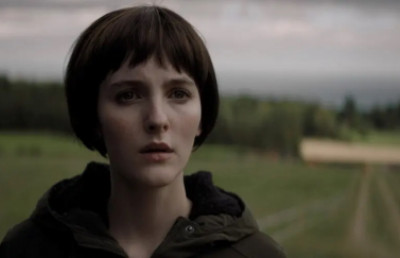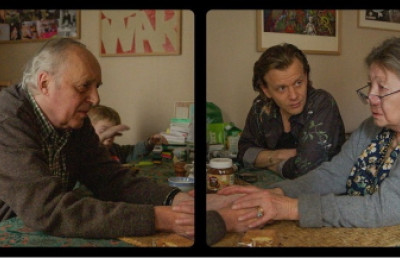FNC 2021: Festival du Nouveau Cinéma
Back in Theatres
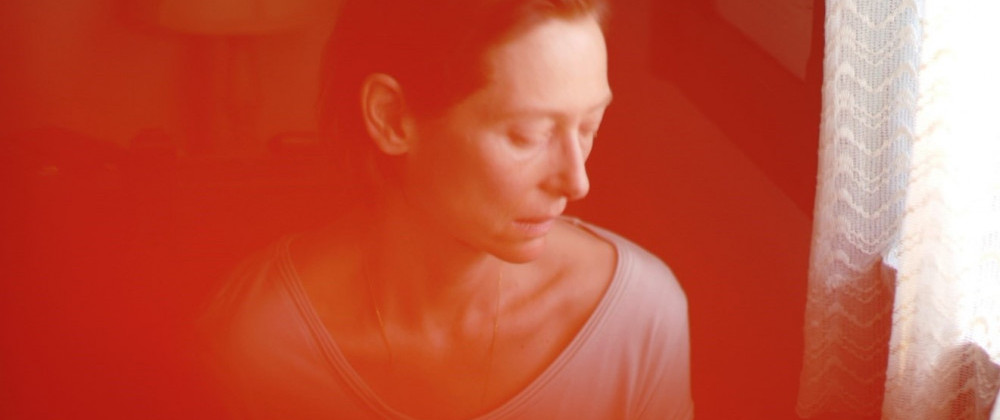
This year’s festival du nouveau cinéma was special for a number of reasons. It was the 50th anniversary of the hallowed institution, but most importantly it marked the return of the theater experience, with even the 50% attendance mandate lifting halfway through the fest. A digital section was still in the cards which helped alleviate scheduling conflicts, but all films had at least an in-person screening, solidifying a feeling of return to normalcy that was bolstered by an intriguing selection where the smaller more marginal efforts regularly outclassed the bigger names on display. After a year in front of the computers, outstanding films like The Girl and The Spider and In Front of Your Face reminded us that our most vital encounters with cinema can come from the most simple of premises, the most bare of settings, and the most broad of visions.
In that spirit, the best film I saw during the festival was Daichi Saito’s earthearthearth, a jaw-dropping experimental short and one of only two films shown on 35mm at the fest. Coming out of a project that also gave us the wonderful Altiplano from Malena Szlam, and which sent experimental filmmakers into the Altiplano region of Chile, earthearthearth is nothing short of spellbinding, a constant rearrangement of planes of colour over an improvised piece of Jazz which completely reshapes our relationship to cinematic space with every new frame. To quote a cliché, Saito paints with light, letting his complex, stratified planes of colour dance and morph in tandem with the freeform score. The effect is quite a mesmerizing, a complete rewiring of the senses, and also a powerful reminder of the power of celluloid on the big screen, providing a dark space to get lost into, to glide along with the images into the mountainous recesses of the mind.
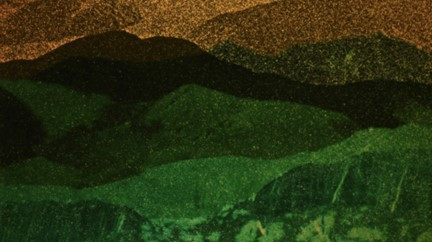
This year also gave us the coveted double Hong, with the Korean master of the boozy shaggy-dog film bringing two films to his Montréal fanbase; Introduction and In Front of Your Face. Of the two, I was more moved by In Front of Your Face, a melancholic, diurnal look at the end of a life filled with the auteur’s customary trip to the bar and questioning about the work of cinema. Following a day in the life of an aging actress as she returns to Korea following many years abroad, Hong perfectly captures the awkward rhythms of family tourism, letting truths about his characters gently slip out from their polite posturing. For the Hong Sang-Soo fanatics, the film is also another sign that the Korean auteur has entered a new period in his work where themes of death and endings give a new shade to his eternal questioning about the way people relate, inebriated or not, to one another.
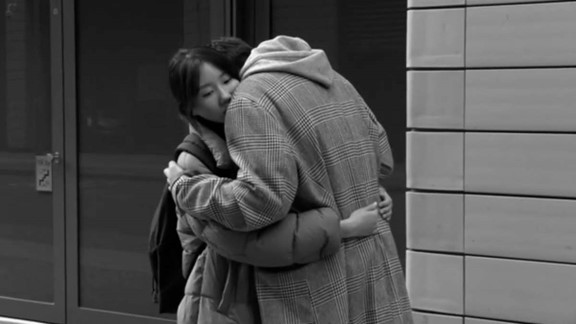
Introduction, which came out a few months before In Front of Your Face, is both shorter and, at first glance, slighter, made up of three scenes dramatizing a certain clash of generations in a newly prosperous, democratic South Korea. As always, meetings of the awkward variety taking place over gentle strolls or drinking sessions are the motor for the film’s elliptical portrait of two generations that in some fundamental way cannot understand one another. If the spare, lyrical finale is anything to go by, however, it seems that Hong believes that the kids are going to be alright.
Hong’s gentle presence could also be felt hovering over the new sketch film from recently minted master of Japanese cinema Ryusuke Hamaguchi, Wheel of Fortune and Fantasy. It can be felt in the tripartite structure, in a winking zoom early on, but also in its interest in the way our identity is shaped by how people view us. Of course, Hamaguchi’s ease with length and more marked interest in process marks him as a true original willing to let his scenes evolve and change in real time, introducing an element of doubt and introspection in his work that can be quite breathtaking. Such is the case in the second part where a reading between a teacher and a student runs the gamut of emotions finally landing in a truly unexpected state of grace. The film was somewhat overshadowed by the surprising if deserved success of Drive My Car, but is well worth seeking to see Hamaguchi’s magic in a more bite sized package.
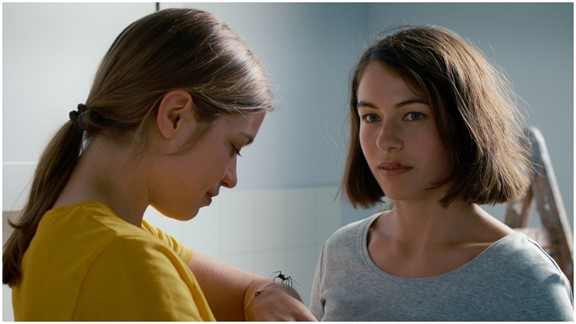
One of the more arresting and confounding films at the festival, The Girl and The Spider (Ramon and and Silvan Zurcher), is a “breakup” drama about the fraught relationship between a pair of roommates spread out over two intense moving days. The film acts like a finely cut gem, all sharp-edges and cutting angles, constantly changing and reflecting the action with each new scenes. The Zurcher brothers delight in disorienting us, dropping us into a web of long-running relationships that seem to shift with each new interaction. In one scene, two characters will seem to hold a warm conversation, only for their next meeting to seem cold and impersonal. The icy beauty of the main character gains an alien effect, reminding us that we can never truly know one another. Truly an UFO of a film.
Closer to home, a number of films got their hooks in me by playing the relatability card. Such was the case with the remastered classic of 2000s Québec cinema À l’ouest de Pluton (Myriam Verreault and Henry Bernadet), a film I have no choice but to love since it’s about the closest thing one can get to actually just filming my adolescence. The film nails the aesthetics of the time, mop hair and oversized hoodies abound, but it gets at something more universal with its lovingly sketched group of teenaged characters, all brought to aching, awkward life by a troupe of non-professional actors who in their unvarnished humanity are about the farthest you can get from the likes of The O.C. The film strikes the perfect balance between laughs, a montage of class presentations is a highlight, and the little epiphanies that at that age can seem so earth-shattering, allowing the viewer to indulge in nostalgia without forgetting the treacherous emotional landscape of our teenage years.
Jumping ahead in time, I was also seduced by the gently adrift character at the center of Joachim Trier’s new film The Worst Person in the World, a nimble chronicle of millennial life in Oslo. Illuminated from within by a winning performance from Renate Reinsve, for which she won the acting honors at Cannes. The film pulsates along the winding rhythms of its flighty protagonist’s life, happy to simply follow her whims without judgment. Call it millennial bait with its quirky romantic comedy beats and gentle sketching of the generation’s tentative recalibration of work, life and consumerism, but the film does succeed beyond its assured direction at putting on the screen a malaise that it artfully articulates with two characters on opposite ends of a generation looking to define itself. As always with Trier, it is his ease with characterization, the subtle ways his camera captures the world that lingers long past the credits have rolled.
One of the treats of the fest came from our old friend Apichatpong “Joe” Weerasethakul, who unleashed a wave of sound and buried memories for a packed Cinéma Impérial with the monumental Memoria. I will admit to some nervousness prior to seeing the movie. This was the Thai auteur’s first film outside of Thailand and with Tilda Swinton, an arthouse legend in the lead. Would Joe get devoured by the uninspired world of global co-productions that so often seem to involve gray social realism in exotic locales with an European star blandly throwing heavily accented English, all the specificity seemingly wrung out from endless committees and rewrites? Quite the opposite actually, with Joe seemingly digesting this kind of film to give us an otherworldly wonder of a film, a journey of sound and image towards the precipice of something new. The film begins with a literal bang, but is much more prosaic than his earlier work, almost like, similarly to his main character, he had to seek out the free-flowing magic that was so readily apparent in his native Thailand. But he gets there and the final sequence is one of the most powerful moments to be found at this year’s fest if not the entire year, a symphony of sound that truly points towards a new direction for cinema and that is capped by perhaps the hardest swing for the fences moment of the fest.
An alien relationship with time and sound was also at the center of another highlight of the fest, the beautifully evocative documentary Faya Dayi from Jessica Beshir, a film that gently but powerfully evokes the lives lived out of time around the addicting plant khat in Ethiopia. With its elliptical rhythms, suspended in time, blanketed by beautiful, oneiric black and white images, the film is like a dream with a dark underbelly underpinning the entire experience, luxuriating in the anesthetized haze of her subjects without forgetting the tendrils of exploitation that extend throughout this whole story. Another experience of losing oneself that greatly benefited from the rarefied air of the blackened theater.
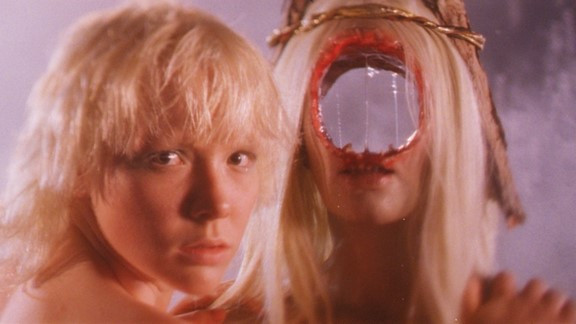
A number of films sadly failed to inspire much passion one way or another in your faithful correspondent. After Blue (Paradis Sale), a new feature from Les Garçons Sauvages director Bertrand Mandico is one such case. As always with the Gallic provocateur, the set design and atmosphere are the stars here, harkening back to vintage high fantasy book covers for a blasé Frazetta aesthetic where gender-bending and sensual body horror are the rules of the game. And that’s about it, the film is slight to a fault with its barely there revenge plot failing to keep the jokes from quickly wearing thin. Perhaps seeing the film in a more liberated state would have helped smooth over some of these misgivings, but his previous film necessitated no such caveat to earn a full-throated endorsement.
Jane Campion’s new effort after a detour to television, The Power of the Dog, whilst far more classical, elicits a similar reaction; all this talent, skill and effort for… this. Don’t mistake me, the film is handsomely made, with sweeping vistas and confident camerawork, well-acted across the board and a fine way to spend two hours, but one is left with an unsettled feeling when the house lights come back on. Not to say that the film is obtuse, quite the contrary, it is quite easy to guess what the film is playing at with its tale of macho cowboys badly covering their insecurities with posturing. And therein lies the issue, the film seems to believe it is uncovering something entirely new, obfuscating its reveals in portentous and overwrought symbolism, and you are left sitting there waiting for the film to evolve into something more interesting. It’s like reading a detective novel, guessing the killer in the first few pages and having to sit through hundreds of pages of red herrings and dead ends. One is left asking why all this grandstanding for an ultimately simple tale that would have benefited greatly from Campion’s ample gifts with characters and small moments.
A similar deception came from Parallel Mothers, Pedro Almodóvar’s new ode to the Spanish mother, which shows the first signs of fatigue from the fiery Spaniard. Whilst the film is laudable for being his most outwardly political in a while; questioning the legacy of the family and the bonds of blood when so many fathers died without leaving a trace under Franco, everything around it remains too placid. This is the first Almodóvar movie I can call boring to look at, with pedestrian digital photography and uninspired staging, leaving us longing for the Hitchockian flourishes of films as recent as Julieta or The Skin I Live In. Alas, the story fails to pave over those issues, leaving us with an average, lifeless film. Let’s hope working with Tilda Swinton for his next film will revive some passion in the king of Deseo.
Boring is not a strike that can be levied at Ahed’s Knee a live wire, in your face scream against Israel from the country’s best director, Nadav Lapid. Continuing to mine the personal after the breathtaking Synonyms, the film follows an Israeli director confronted with state censorship when he goes to show one of his movies at a cultural center in the South of the country. From this bare-bones story, the film explodes into a bracing and sometimes hard to swallow look at art, country and the artist as self-righteous asshole. The film can no doubt be unpleasant, prickly and coarse, aiming its venom at everything in sight, but its all-consuming anger only becomes more appropriate with each passing day.
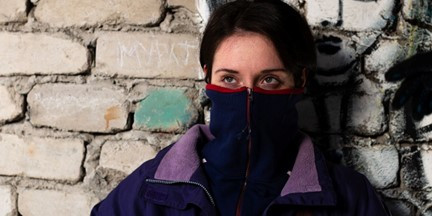
A number of films coincidentally focused on enclosed spaces casting us back to only a few months prior. Of these the least interesting was probably The Pink Cloud (Iuli Gerbase), a Brazilian film made before the pandemic that lucked its way into relevance with eerie prescience and not much else. Others took imprisonment both literal and metaphorical as their thematic core like the handsomely made prison film Great Freedom (Sebastian Meise), an effective look at the homophobia of post-war West Germany and a great showcase for rising star Franz Rogowski. In the amateurish but heartfelt District Terminal (Bardia Yadegeri and Ehsan Mirhosseini), the cast of character is stuck inside their own country, yearning to escape Iran to a West filled with promise and turning to drugs and delinquency to fill the long, pointless days. Such subject matter is no doubt brave in a country known to jail filmmakers, but the film succeeds beyond mere resistance, imbuing even its flaws and imperfections with an all-consuming air of despair. A more intense tale of escape could be found in Unclenching The Fists, an assured debut from Kira Kovalenko taking place in North Ossetia. A claustrophobic story of codependence, the film is brusque and tender sticking close to its characters with an assured visual style. Less interesting was the beautifully animated but predictable La Traversée (Florence Miailhe), a film that regurgitates most of the clichés of refugee cinema without bringing anything new outside of its painterly art style.
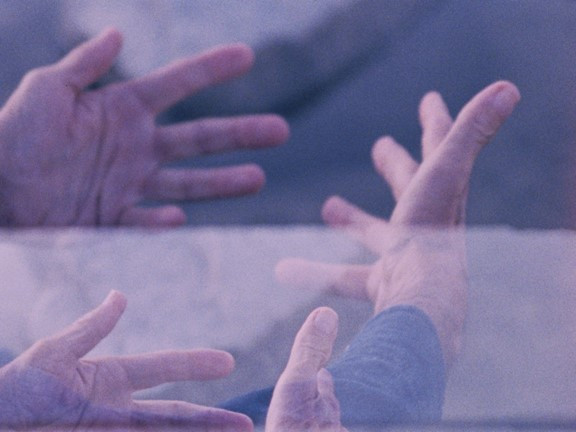
More intimate and satisfying was Ste. Anne from Rhayne Vermette about the return of a young mother to her Metis community in Manitoba that soars when it focuses on the familial home. Shot in 16mm and using the director’s family as actors, there is real warmth and intimacy that emanates from the crepuscular images, often simply lit by the hearth at the center of the house. There is some awkwardness in the more clearly fictional scenes, but the film comes alive in the improvised scenes of togetherness, letting the real familial bonds imbue the picture with love and light. To be frank, I could have taken a film that was only family scenes, basking in the warm embrace of a family and community united by more than just blood.
French provocateur Gaspar Noé also graced the fest with dual works, both hellish huis clos, that went about their goal in vastly different ways. Of the two I preferred the shorter, more visually arresting Lux Aeterna about a movie shoot from hell that quickly descends into chaos in the director’s trademark neon soaked long takes following vain monologuing assholes. Noé fanatics will feel right at home here.
Vortex, the longer, more grueling descent to hell, is also more of a departure, taking place almost entirely in split-screen inside of a claustrophobic Paris apartment as an aging matriarch, played by screen legend Françoise Lebrun, descends into dementia. The central gimmick is claustrophobic and disorienting, but the subject matter is depressing enough on its own to ensure a bad time at the movies. Here the drugs are prescribed but the trip is no less harsh.
And as we come down from another heady trip of cinema, this year’s edition of the FNC reinforced a few things, a recognition that great cinema can come from anywhere and in any shape, whether a new work from a beloved master or a short piece of experimental art. It also reminded us that cinema theaters are a site to get lost in, one of the rare places in today’s world where you can give yourself some time, turn off the phone and drift away. And for that alone they deserve to be protected.



